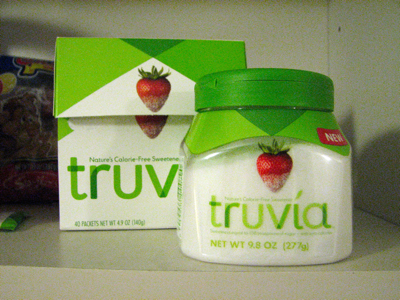I’ve been meaning to write this blog for over a year now. If you’re not familiar, Stevia is an all-natural zero-calorie sweetener and I’ve been using it for a couple years now. I use it mostly in my tea, but it can be used in lots of things. It has no known side effects and it’s been used in Asia for several decades and in South America for several centuries with no known health problems. Unlike synthetic artifical sweeteners like aspartame, saccharin, and sucralose (Splenda), Stevia is 100% natural and comes from a plant of the same name. I’ve had great success growing and harvesting it myself, right in my apartment this semester.
Stevia is currently being sold by several companies. My favorite is the Cargill/Coke product TruVia. Pepsi has marketed PureVia, and there are several other brands under various labels such as Stevia in the Raw and Sun Crystals. Most of them dilute the extremely sweet Stevia with maltodextrin or a similar empty-calorie carbohydrate. A good rule of thumb is to look for green labeling to distinguish from other sweeteners. Real sugar is usually packaged in white or brown, aspartame in blue, saccharin in pink, Splenda in yellow, and Stevia in green. They all appear white in their refined form.
Many new diet/zero-calorie drinks are sweetened with Stevia, such as Sobe LifeWater, Lipton PureLeaf Tea, Vitamin Water, and Zevia Soda. Stevia has been approved for diabetics because it does not cause an insulin response. In fact some studies suggest Stevia may reverse the effects of insulin resistance and improve diabetes. It has only recently received FDA approval in the US, which is why we’ve experienced the sudden boom in product placement. I’ve found that some people don’t like Stevia, but most find that it has little or no taste other than sweet. It can depend on the specific brand and blend. In particular my mom doesn’t like raw Stevia but she does like Sun Crystals, a slight mixture of Stevia and a tiny amount of sugar – it smooths the taste a bit and is only 5 calories per packet.
I ordered some Stevia seeds over the Summer and I’ve been growing the plants in my apartment during the college semester. It’s a fairly aggressive grower once you get it started and is easy to manage, though it can get quite tall and, like tomato, Stevia requires regular pruning to remove suckers. The leaves can be removed, and 100% grain alcohol can then be used to extract the Stevia compound from the leaves. The leaves are also easy to dry for storage and later use. Below is a photographic journal of my experience with this awesome plant…
You can see just how tall the plant can get. I’m sure this is at the low end of growth since it’s not in an ideal climate.
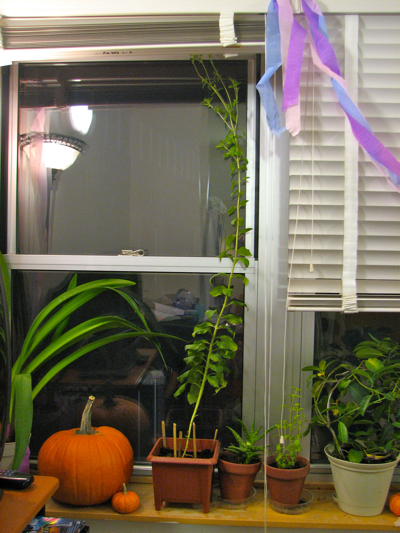
One of the suckers that tomato growers are all too familiar with. It’s really like a baby plant in its own right and can be separated and rooted for planting. I did this a couple months ago with Take Root media, but it’s not very practical considering there are better ways of cultivating Stevia.
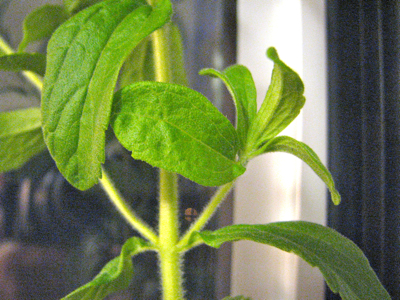
As the plant matures it develops woody tissue at its base. If this is cut back, small plants will grow out from this base. The plant itself has a mild flowery-sweet scent that will rub off on your hands if you touch the stalk or while harvesting leaves.
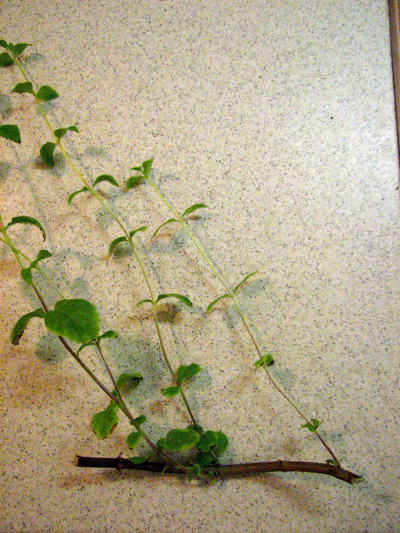
A close-up of a baby plant emerging from the woody base of the previous mature plant.
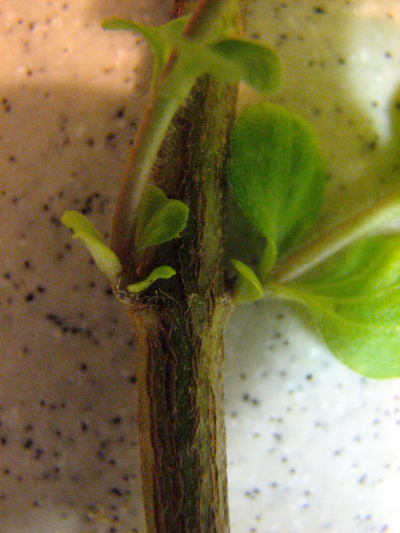
These are some recently harvested leaves from a mature plant. I use a tin disposable baking pan with holes melted in the clear plastic top. They dry out easily with virtually no mold.
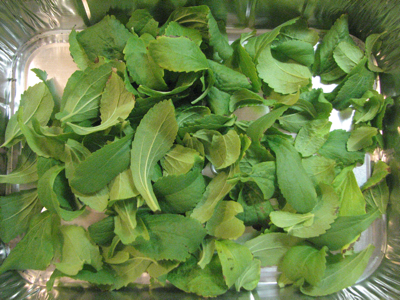
I believe this is a bud at the top of the mature plant. There are several of them and they appear different than the emerging suckers. If these are in fact buds, I will attempt to self-pollinate them and see what kind of seeds I can obtain.
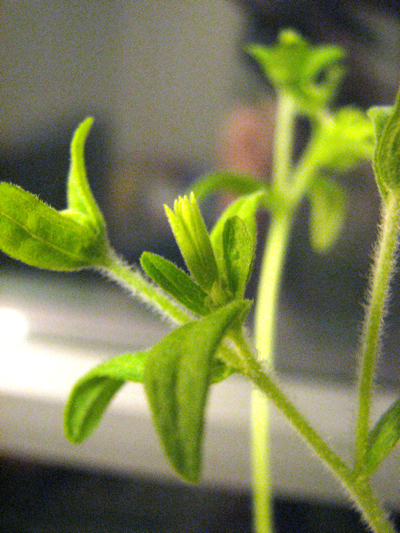
This is the Stevia extract I acquired using 100% grain alcohol vodka. The process is fairly straightforward. This is the extract of several mature plants and many leaves. It may not look like much, but keep in mind Stevia is 300 times sweeter than sugar. This small dish (frozen for preservation) can make A LOT of Stevia sweetener. I tasted a tiny bit of the pure extract and it’s so sweet that it tastes bitter, like burnt sugar. It has to be diluted with water.
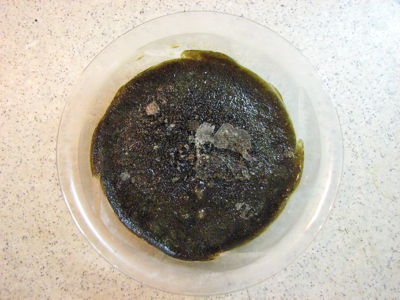
This is the commercial Stevia I use, TruVia by Cargill & Coca-Cola. I find it has a smoother taste than the other brands. As you can see it’s white, unlike my greenish-brown homemade extract. This is because I lack the industrial processes that refine the Stevia to an absolute pure form. My extract likely has other plant matter in it such as tannins and cellulose, though these do not have a major impact on the overall flavor.
